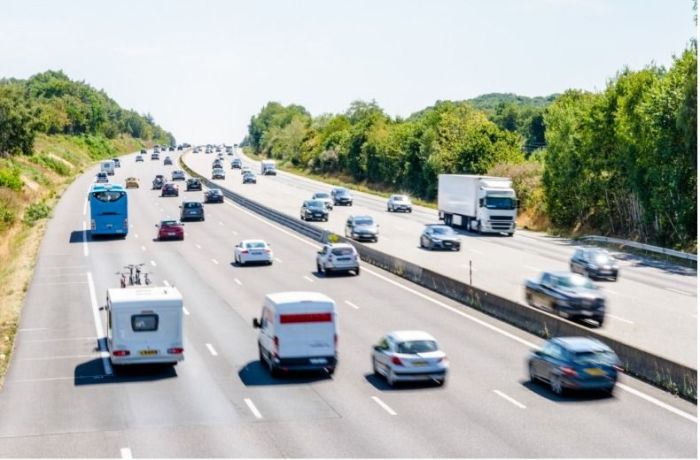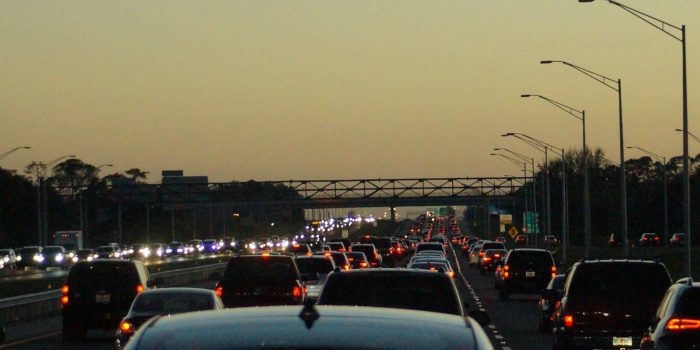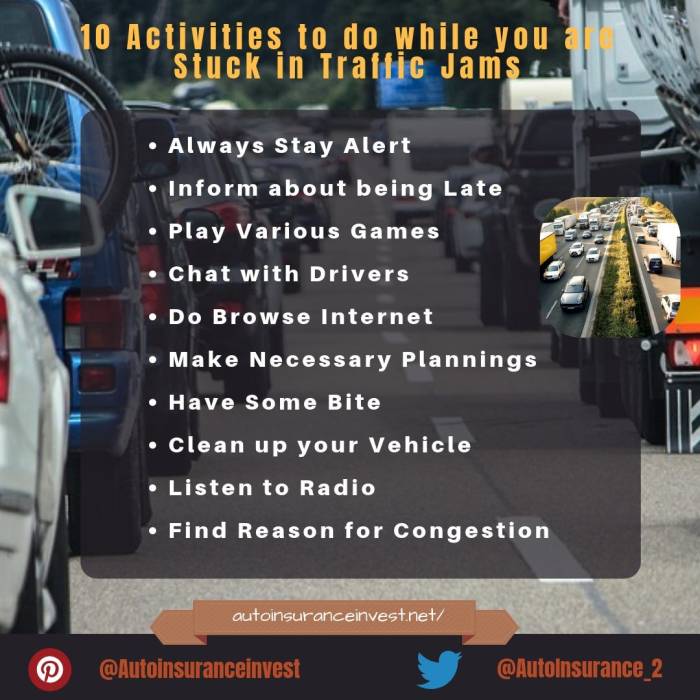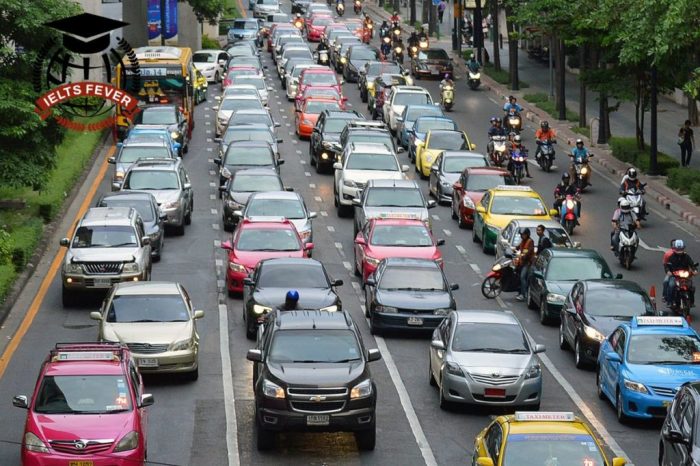How to Deal with a Traffic Jam delves into practical ways to tackle the frustration of being stuck in traffic. From understanding the root causes to proactive measures and coping strategies, this guide equips you with the tools to navigate congestion effectively.
Understanding the Causes of Traffic Jams

Traffic jams can be caused by various factors that contribute to congestion on roads and highways. Understanding these causes can help us navigate through traffic more efficiently and possibly avoid delays.
Common Reasons for Traffic Jams:
- High volume of vehicles on the road, especially during peak hours or holidays.
- Accidents, road closures, or lane blockages due to collisions or breakdowns.
- Construction activities that limit the number of lanes available for traffic.
- Weather conditions such as heavy rain, snow, or fog that reduce visibility and traction.
Accidents’ Contribution to Traffic Congestion:
Accidents are a major factor in causing traffic jams as they can lead to lane closures or blockages, forcing vehicles to slow down or come to a complete stop. Emergency response vehicles and tow trucks further add to the congestion by occupying space on the road.
Impact of Construction Activities on Traffic Flow:
Construction projects that require lane closures or detours can significantly disrupt traffic flow, especially on busy roads or highways. Delays caused by construction work can create bottlenecks and lead to long queues of vehicles waiting to pass through the affected area.
Examples of How Weather Conditions Affect Traffic:
- During heavy rain, roads may become slippery, increasing the risk of accidents and causing vehicles to slow down for safety.
- In snowy conditions, snow accumulation on the road can reduce traction and visibility, leading to traffic congestion and delays.
- Fog can significantly limit visibility, forcing drivers to reduce speed and maintain a safe distance, resulting in slower traffic flow.
Proactive Ways to Avoid Getting Stuck in Traffic

Planning ahead is key to avoiding getting stuck in traffic. By taking proactive measures, you can save time and reduce stress during your commute.
Plan Alternative Routes
- Use GPS apps to identify alternative routes with less traffic congestion.
- Check traffic reports before leaving to choose the best route based on current conditions.
- Explore side streets or back roads as alternative options to major highways.
Benefits of Using Traffic Apps
- Receive real-time updates on traffic conditions, accidents, and road closures.
- Get notified about the fastest route to your destination to avoid delays.
- Plan your commute more efficiently by adjusting your route based on live traffic data.
Importance of Leaving Early
- Avoid rush hour traffic by leaving home earlier than usual to allow for unexpected delays.
- Reduce stress by giving yourself extra time to reach your destination without rushing.
- Arrive at work or appointments on time by accounting for potential traffic jams.
Carpooling or Public Transportation
- Share rides with colleagues or neighbors to reduce the number of cars on the road.
- Utilize public transportation options such as buses or trains to bypass traffic congestion.
- Save money on gas and parking fees by carpooling or using public transit.
Coping Strategies When Stuck in a Traffic Jam

When you find yourself stuck in a traffic jam, it can be frustrating and stressful. However, there are ways to cope with the situation to make the experience more bearable.
Stay Calm and Patient
It’s essential to remain calm and patient when stuck in a traffic jam. Getting worked up and frustrated will only make the situation more stressful. Take deep breaths, listen to calming music, or practice mindfulness techniques to help you stay relaxed.
Stay Entertained
One way to pass the time in traffic is by staying entertained. Consider listening to a podcast, audiobook, or your favorite music. You can also play games on your phone or engage in car-friendly activities like crossword puzzles or brain teasers.
Stay Hydrated and Have Snacks
It’s important to stay hydrated and have snacks on hand while stuck in traffic. Dehydration can worsen feelings of irritability, so be sure to have a bottle of water with you. Snacks like nuts, fruits, or granola bars can help keep hunger at bay and maintain your energy levels.
Engage in Productive Activities
Instead of letting the time go to waste, use it productively by engaging in activities like organizing your car, planning your schedule, or making phone calls (if it’s safe to do so). You can also use the time to catch up on emails, read a book, or practice a new language with language learning apps.
Techniques for Dealing with Road Rage in Traffic Jams

Road rage and aggressive driving can pose serious dangers on the road, leading to accidents, injuries, and even fatalities. It’s crucial to manage frustration and anger while in traffic to ensure the safety of yourself and others around you.
Managing Frustration and Anger, How to Deal with a Traffic Jam
- Practice deep breathing techniques to help calm nerves and reduce stress levels.
- Avoid engaging with aggressive drivers or responding to provocation.
- Listen to soothing music or podcasts to distract yourself from negative emotions.
Maintaining a Positive Attitude
- Focus on the things you can control, such as your reactions and behavior.
- Remind yourself that getting angry won’t change the traffic situation but can make it worse.
- Try to find humor in the situation and stay optimistic about reaching your destination safely.
Deep Breathing Techniques
- Take slow, deep breaths in through your nose and out through your mouth.
- Count to five as you inhale, hold your breath for a moment, then exhale slowly.
- Repeat this process several times until you start to feel calmer and more in control.
End of Discussion: How To Deal With A Traffic Jam

In conclusion, mastering the art of dealing with a traffic jam involves a blend of patience, preparation, and a positive mindset. By employing the tips and techniques Artikeld here, you can turn a stressful commute into a more manageable experience.